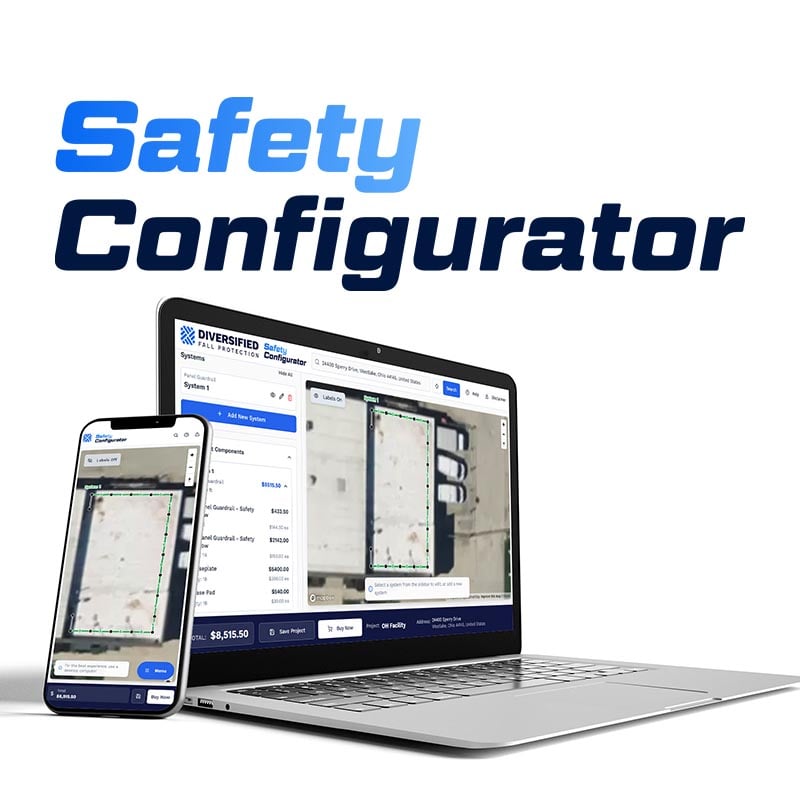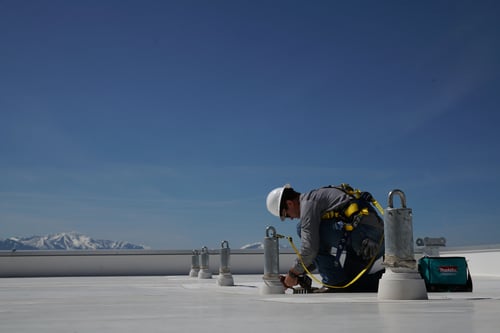Automotive Fall Protection
Automotive parts and assembly plants pose a number of fall hazards that must be addressed to keep your facility online and ensure employee safety. From the large rooftops housing air handling and HVAC equipment to cranes, conveyors, and presses, the maintenance, inspection, and repair requirements found in the typical automotive assembly plant expose your employees to fall hazards that must be mitigated. Regardless of whether your facility is currently in the planning and construction phase, adding a new assembly area, or an OSHA citation has prompted the need for fall protection equipment, you can rely on our team of fall protection engineers to recommend, design, and install application specific fall arrest and fall restraint solutions that will keep your workers safe and productive.

Fall Protection Solutions
Design Considerations
From an exterior standpoint, the large rooftops typically associated with the automotive industry house much of a facility's air handling and HVAC equipment, which requires maintenance and repair. In addition, large flat roofs are prone to leaks which may damage equipment or interrupt production inside the facility. For these reasons, a major component of fall protection for the automotive industry is ensuring employee safety as they access the roof and perform maintenance and repair in a rooftop setting. Ladder systems, guardrail, horizontal lifelines, and single point anchors are all common fall protection solutions for automotive applications. Because these systems are subjected to prolonged exposure to the elements, all of the components of a rooftop fall protection system must be made of stainless steel or other corrosion resistant materials.
For rooftop installations, DFP can design and install a variety of non-penetrating guardrail systems to prevent leaks. Regardless of location or mounting style, the top rail must be rated to withstand a force of at least 200lbs; the mid-rail must be rated at 150lbs. Guardrail systems may be powder-coated safety yellow for high visibility or utilize custom colors to match or blend into the surroundings.
Single point anchors are rated at 5,000 or 10,000lbs or 2 times the applied load in the event of a fall by a qualified person. A single point anchor may be designed for single or dual tie-off as long as each user attaches to a designated D-ring. Multiple users should never tie off to the same D-ring under any circumstances.
Rooftop single point anchors can be used in conjunction with a variety of deck substrates including metal standing seam, rubber membrane, or concrete. A SPA is designed to protect workers within a 30 degree conical cone; moving outside the intended coverage area increases the likelihood of coming into contact with structure below the work area in the event of a swing fall.
Horizontal lifelines designated for rooftop use are typically constructed from corrosion resistant stainless steel components for maximum service life. Our fall protection safety specialists can engineer a horizontal lifeline system to accommodate the special characteristics of your rooftop, from corners to the absence of pre-existing anchor points and more.
Although the horizontal lifeline system may seem simple in function and design, special care must be taken to account for the loads on various anchor points and deflection in the event of a fall. Each anchor point must be secure enough to withstand the forces associated a fall and a thorough review of the work area is needed to ensure that a worker will not strike pipes, equipment, or other surfaces when falling. Load and deflection rates are determined by a number of factors, including pre-tension of the cable, length of the area spanned by the horizontal lifeline, and the number of workers connected to the system.

b-1.jpg?width=1368&height=1340&name=Rail%20(175)b-1.jpg)




1.webp?width=500&height=380&name=HLL%20Overhead%20(661)1.webp)
.webp?width=1500&height=1125&name=Access%20(2).webp)

